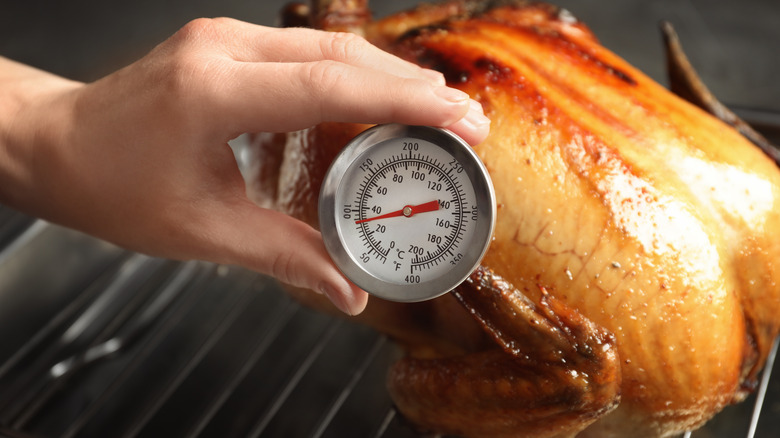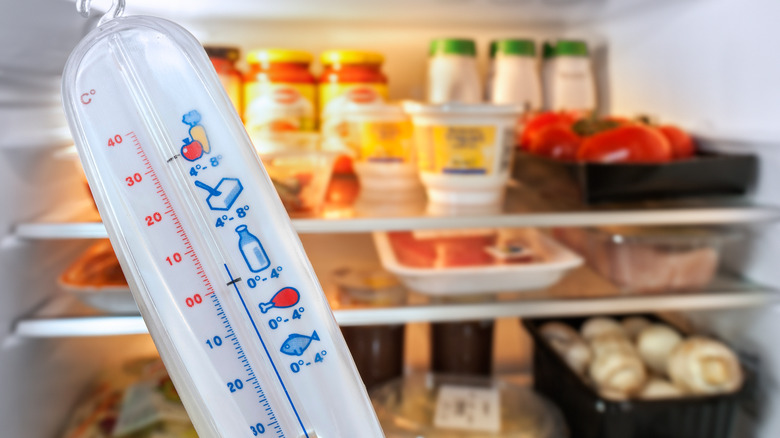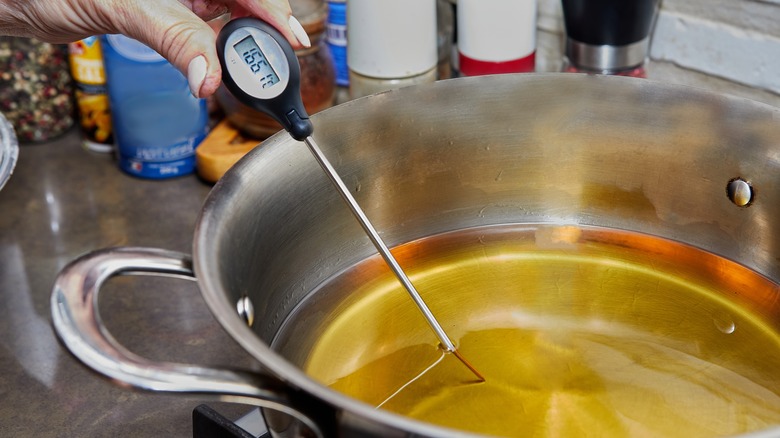The Best Ways To Use A Meat Thermometer (That Aren't For Checking Meat Doneness)
If you can't stand the heat, get out of the kitchen. We've all heard these classic words of caution. Though the phrase is often used in a metaphorical context, it can be applied to an actual kitchen as well — cooking is by no means easy. You'll need to arm yourself with the right tools before stepping into the fire. Fortunately, it's possible to limit your arsenal, as there are a number of culinary tasks that can be accomplished by intentionally misusing a kitchen implement.
The Washington Post asked its readers to send in their kitchen tool hacks, and the publication received many fascinating responses. This included one reader suggesting that you use a melon baller to both parcel out individual portions of cookie dough and strip peppers of their shabby interiors, and another tells us that sticking a corn cob in a bundt cake pan's hole will allow you to slice off the kernels without making a mess. One of the most essential kitchen tools, the meat thermometer, has a number of alternative uses.
Using a meat thermometer to test different foods
In a kitchen, everything has its place, including the meat thermometer. However, assuming that the only place this tool belongs is in a hunk of perfectly cooked meat is a mistake. Remember, a meat thermometer is still, at the end of the day, a thermometer.
Cook's Illustrated tells us that the doneness of bread can be roughly ascertained by examining the color of its exterior. If your bread looks baked and has taken on a golden-brown crust, it's probably done baking. But wouldn't it be better to use a meat thermometer, and know precisely when to pull your bread from the oven? Real Simple tells us that your bread should be ready between 190 and 200 degrees Fahrenheit. An egg yolk will be solid yet still runny at 180 degrees Fahrenheit. Real Simple also recommends using a meat thermometer to ensure that your fridge's liquid inhabitants are still safe to drink. Milk, for example, shouldn't exceed 40 degrees Fahrenheit.
The myriad ways to use a meat thermometer
Simply checking the temperature of non-meat food items is one thing, but the meat usefulness of the meat thermometer doesn't stop there. If you want to make the perfect crispy french fries, you can check the temperature of frying oil with a meat thermometer, just so long as it can register temperatures in excess of 300 degrees Fahrenheit, Chefstemp notes.
Additionally, Bake Magazine tells us that water temperature plays a crucial role when you're making dough and could affect your final bake. You can use a meat thermometer to ensure your water is at the right temperature — this same trick can help you draw the best bath and avoid scalding your sensitive palate on a steaming cup of morning joe, via EatSmart Products.
If you're feeling a bit under the weather, place a meat thermometer under your tongue to determine whether or not you've developed a fever per ThermPro. (Just make sure that your thermometer has been properly sanitized first, or you could come into contact with an entirely new illness.)


